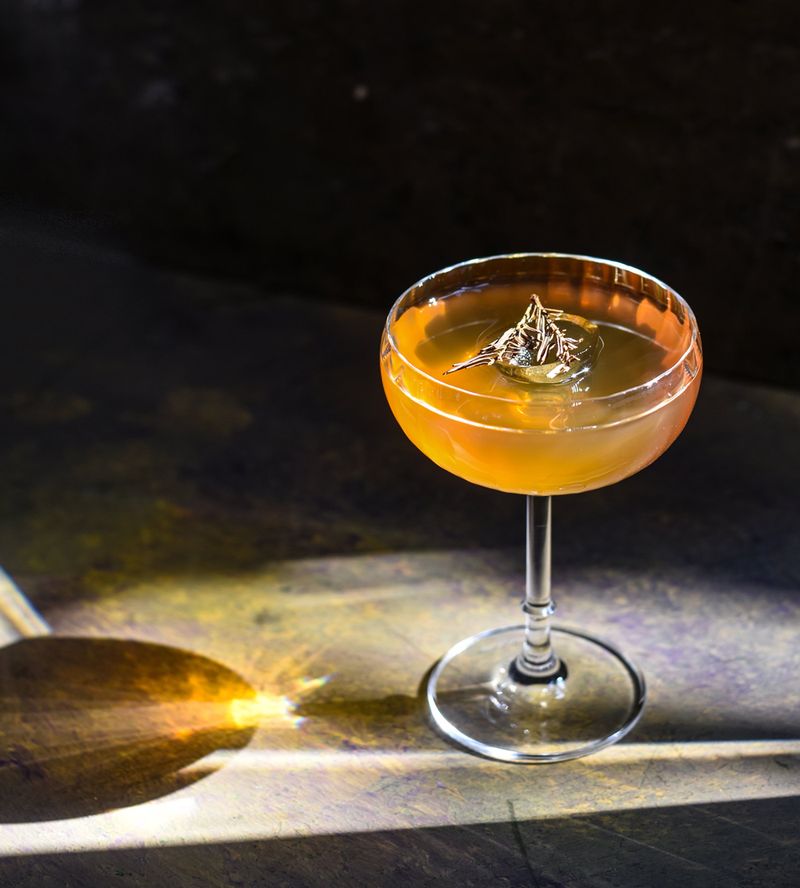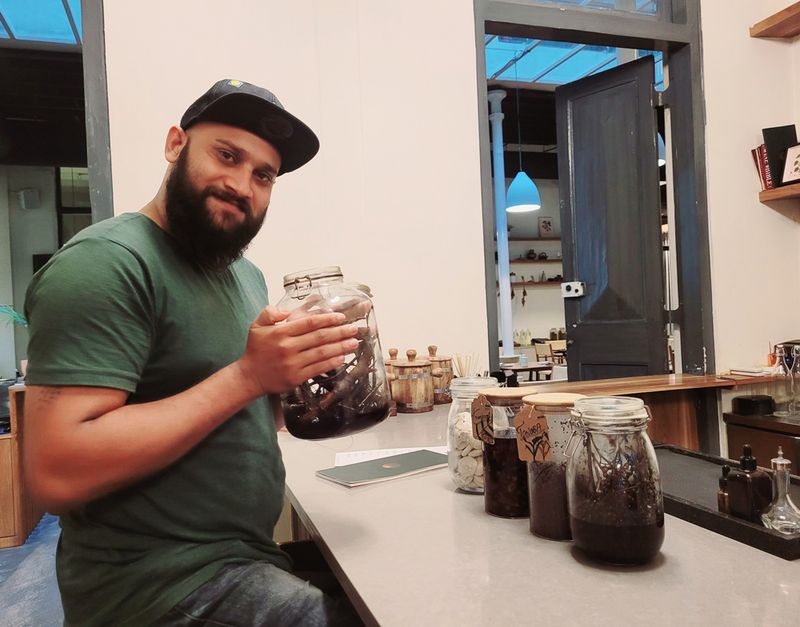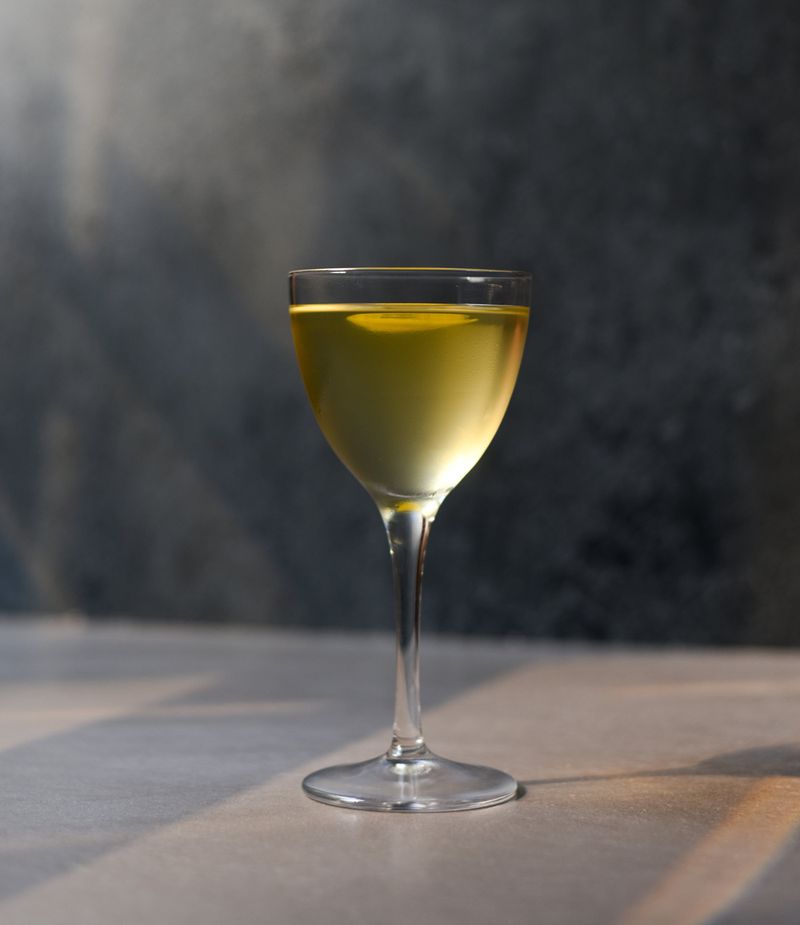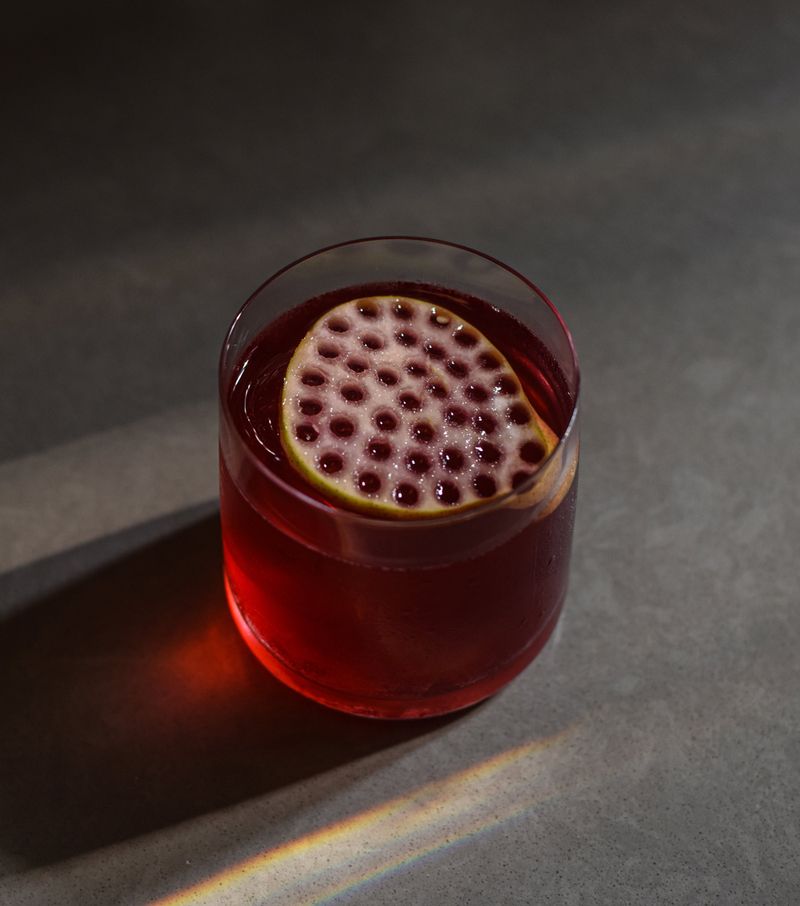I close my eyes with a smile. I’m walking in a forest filled with fragrant pine trees. I feel invigorated by the pine scent, can almost taste the sharpness of the pine needles on my tongue, and can hear the crunch of the pine cones underfoot, feel the gentle mountain sunlight on my face. I open my eyes. The glass I just sipped from is still on the bar counter. The lights are dimmed, the ambient music mesmerising, there are beautiful botanical illustrations on the walls… the mood is just right for taking the senses on a new taste adventure. Himalayan Fir, the crisp cocktail that’s taken me into the heart of the mountains is one of the new ones on Ekaa’s new cocktail list.

In harmony with chef-owner by Niyati Rao’s experimental food philosophy at the restaurant, where the team digs deep into Indianness, the ingredients for the dozen drinks on the Dwadash (which means 12 in Sanskrit) cocktail menu are drawn from different parts of the country. And not merely sourced, but scouted out, deeply researched, and cleverly used in technique-forward cocktails that will turn what you know about drinks upside down. Proponents of Ayurveda have always used these ingredients, being in the know of their healing powers. If you check the labels of the Ayurvedic oils, pills, potions, and beauty products, that are commonly available even today, you’ll recognise several of the names. But to bring them onto a cocktail menu, extracting their powerful flavours, is something very unique and rather brave because they aren’t easily identifiable and accessible.

When ace barkeep Jishnu AJ told me about his plans for creating these cocktails in July last year, he had already started making forays across the country’s forests to meet with Ayurveda experts, foraging for wild herbs and roots that could be distilled into distinct flavour enhancers. He would then teach the locals how to sun dry and pack and ship the ingredients, slowly filling up the Ekaa shelves with a wide array. As he lovingly handled each bell jar filled with exotic ingredients and proudly listed their contents and properties, he looked more like an ancient apothecary than head mixologist at one of India’s most cutting-edge bars!

A year into his labour of love, Jishnu is in his element at Ekaa today, talking about his learnings from the travel across the country while giving me the lowdown on the drinks I’m trying to wrap my head around. The slightly floral gin-based one I mentioned above uses Talispatra or the Indian fir leaf with clarified apple juice and elderflower. Vodka lovers might prefer the smoky highball called Bael Leaves, which bears a different but not-unlikeable, vegetably-peppery flavour profile that is emphasised by muddling fresh leaves into the drink that also has a tinge of smoked chilli. The Kapur Kachri goes down really smoothly. The meld of Indian Agave with the kapur kachri or Spiked Ginger Lily which is wild flowering ginger from eastern India, gives the resultant libation an olive-like tartness.

Edible camphor crystals like the Indian sweet shops use, Triphala powder that is a blend of three fruits, A tree resin called Myrrh, Roselle which is related to the Hibiscus, Mizoram palm flower, Timbur pepper from Nagaland which is available only two months a year, and Naga basil that tastes just like absinthe, and many others, are part of his rich repertoire.

Not only does the menu have gorgeous illustrations of each exotic ingredient that exudes main character energy and each one’s ‘origin story’ as it were, but there’s even a board with all the top roots and herbs presented as a visual aid to what’s coming up. It’s as fascinating to see the unique garnishes that look like they belong to another planet and how the diverse flavours reveal themselves in every sip. It’s certainly a day to ‘boldly go where no one has gone before’. Jishnu advises with a laugh, “Dwadash is a menu that takes time to understand. It’s a whole new approach to the cocktail programme. In this case, I encourage you to interact with the cocktail, not with the bartender!”

My immersive cocktail tasting continues. The next cocktail I try, named quite enigmatically — Wormwood — is a twist on the White Negroni. While most bars in India don’t serve this popular cocktail because they don’t stock Suze (a bittersweet French aperitif which contains gentian roots) and the tonic wine called Lillet Blanc, Jishnu’s take mixes unique flavours such as toasted coriander, and jasmine syrup with wormwood, a potent ingredient that is used to make absinthe and vermouth. A hint of bitter from the green chiretta herb balances out this spirit-forward cocktail, which is quite potent in the taste as well as the tale.
Similarly, the adventure behind bringing the root called Jatamansi, which resembles dreadlocks, from Kashmir is best heard from Jishnu over the drink of the same name. This tequila-based cocktail, served highball style, has the sweetness of honeydew melon, the brightness of bubbly, balanced by the earthy perfume of Spikenard or Nardostachys jatamansi.

The stories behind the ingredients are fascinating, no doubt. But the effort that has gone into concocting these very creative cocktails is admirable too. For example, so much goes into making Khus, which brings your brain to an Indian summer, where a splash of water released the heady aroma of the vetiver curtains that provided shade and coolth on 20th century verandahs. While khus sharbat is made using the leaves, Jishnu tells me how they use the khus root, which people in Tamil Nadu boil and drink daily for good health. This blends well with the mezcal and clarified apple juice. But the hero is definitely the caramelly tones of the black garlic and honey syrup, which is a result of painstakingly cooking it in the sous-vide machine at 60 degrees Celsius for three hours daily for 15 days.

You might associate this one with hair oil, but the way Jishnu uses Brahmi or gotukola in a drink is simply sensational. The slightly astringent properties are offset brilliantly against the soft and fruity Japanese Toki whisky, and the addition of a red wine reduction, cinnamon, and pear, give it a celebratory touch that makes me feel Christmas has come early. It’s the very ability of each of these cocktails to take you on a journey and transport you to another place, time, or mood, that sets the Dwadash menu apart from anything else I’ve had before.
Address: Kitab Mahal, 1st Floor, D Sukhadwala Road, Azad Maidan, Fort, Mumbai
Timings: 12.30pm–3.30pm; 7pm–1.30am
Drinks for two: INR 4,000


_1710413867235_thumb_1200.jpeg?w=3840&q=75)
